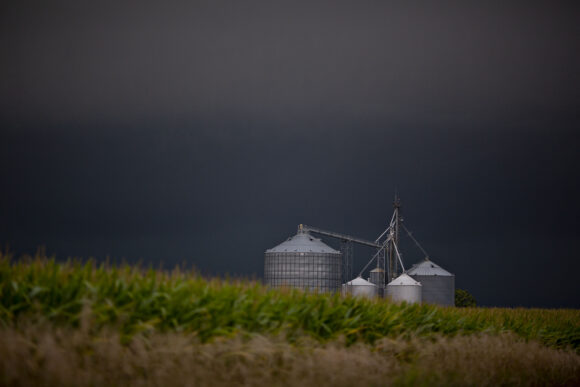There is a moderate risk — the second highest — of severe thunderstorms across parts of Iowa, Illinois, Wisconsin and Missouri affecting more than 3.8 million people, the US Storm Prediction Center said.
“All severe hazards will be possible including damaging winds of 60 to 80 mph, tornadoes and large hail,” the National Weather Service in Iowa said. Downpours fueled by thunderstorms have raised the flood risk across the area.
The severe weather comes as clean up continues across Houston, Texas, where a windstorm ripped through the area last week, causing $5 billion to $7 billion in estimated damages, according to AccuWeather Inc.
As of 10 a.m. New York time, there were still 146,215 customers without power in Texas, data from PowerOutage.us show. Storms also caused outages in Nebraska, where more than 10,000 homes and businesses were affected.
In other weather news:
Extreme turbulence: Singapore Airlines Ltd. said one person was killed and several others injured after a flight from the UK to Singapore encountered severe turbulence in the skies over Asia and was forced to make an emergency landing in Thailand.
India: Temperatures hit 47.4 C (117F) in Delhi’s Najafgarh, according to the India Meteorological Department. Heat waves, possibly in the severe range, are most likely to continue over the plains of northwest India. Similar conditions are also expected over north Madhya Pradesh and Gujarat State during next five days. Meanwhile, south Peninsular India is forecast to see isolated rainfall until Friday. Extremely heavy downpours are possible over Kerala on Wednesday and Thursday.
Europe: The continent is bracing for its first hot spell of the summer, with Germany and the Nordics set for unusually high temperatures next week.
Top photo: Grain bins stand on a farm as storm clouds are seen overhead in Chatsworth, Illinois, U.S., on Tuesday, Aug. 20, 2019. Inconsistency is the one constant coming out of a major U.S. crop tour that kicked off on Monday as scouts get to see first hand the impact of wild weather on Midwestern corn and soybean fields.
Was this article valuable?
Here are more articles you may enjoy.


 ‘Door Knocker’ Roofers Were Everywhere. NC Farm Bureau Saw an Opportunity
‘Door Knocker’ Roofers Were Everywhere. NC Farm Bureau Saw an Opportunity  Instacart to Pay $60 Million in FTC Consumer Protection Case
Instacart to Pay $60 Million in FTC Consumer Protection Case  Tesla Drivers Are Buying Escape Tools and Cars to Avoid Getting Trapped Inside
Tesla Drivers Are Buying Escape Tools and Cars to Avoid Getting Trapped Inside  Trump Sues BBC for $10 Billion Over Documentary Edit
Trump Sues BBC for $10 Billion Over Documentary Edit 